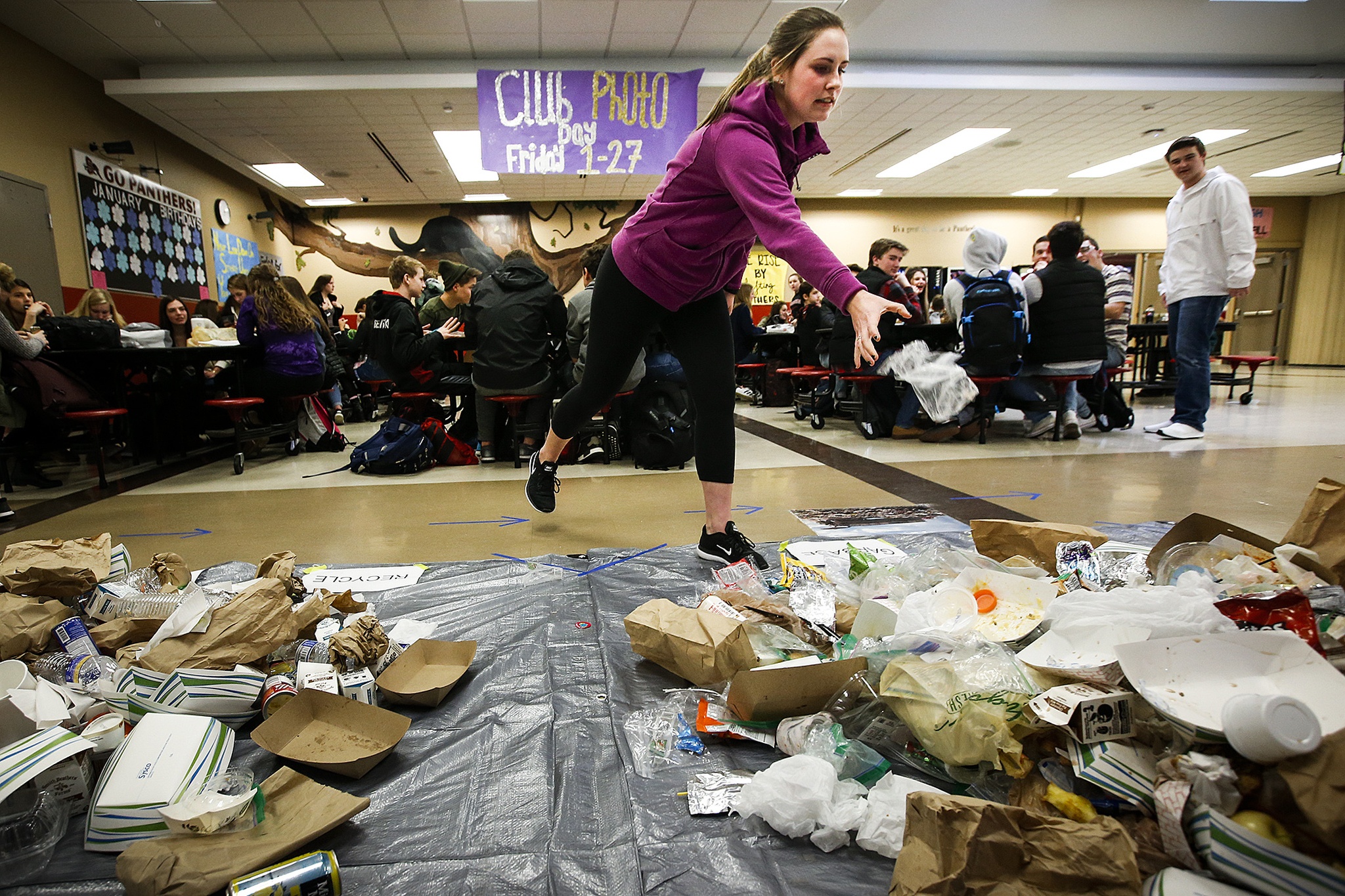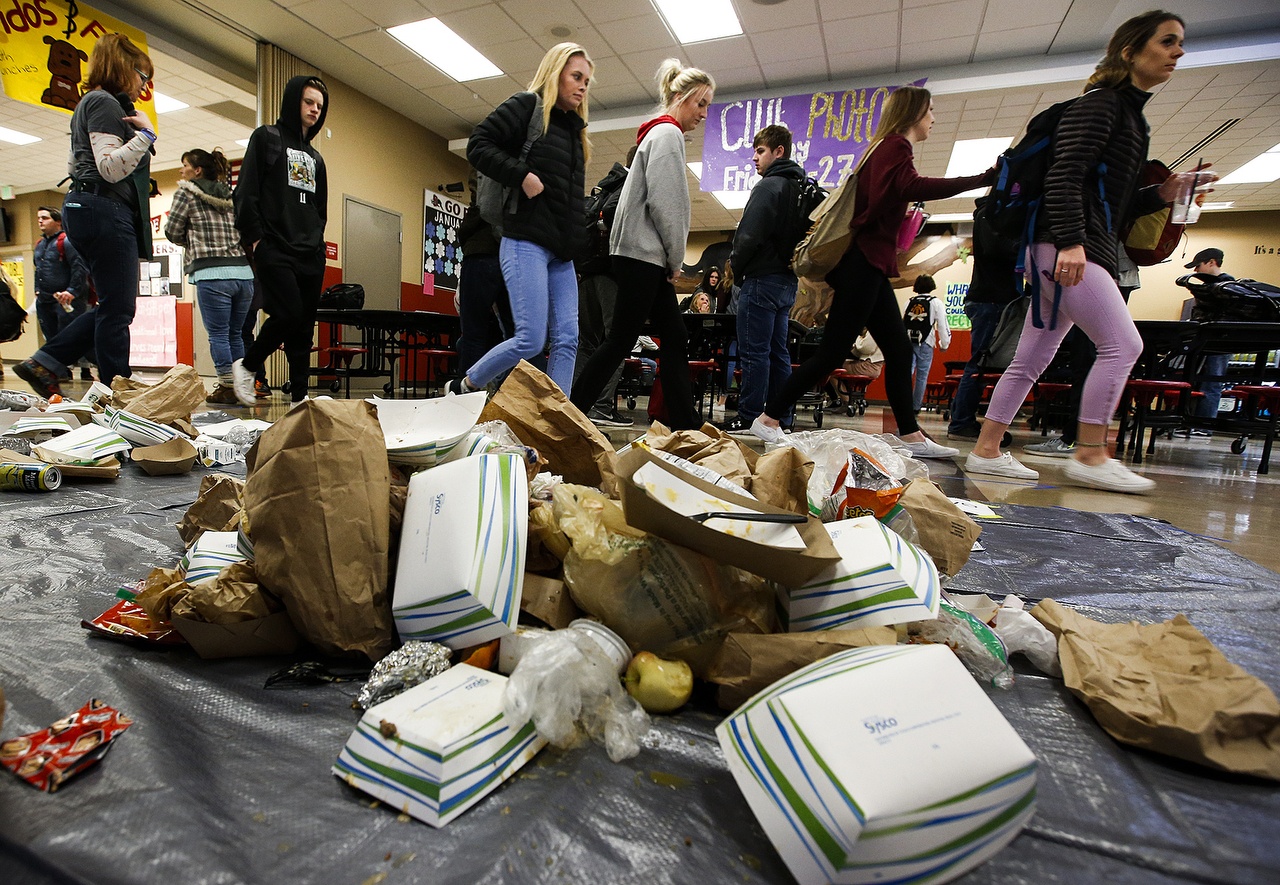SNOHOMISH — There was a lot of trash talking at Snohomish High School the other day.
Students in the school cafeteria Tuesday were asked to dispose of the remnants of their lunches on giant tarps instead of the usual bins. The tarps were designated for recycling, garbage and composting.
Maria Tobler and Tanner Phelps, seniors and co-presidents for the school’s environmental club, were eager to watch their classmates. The gist of the exercise was to get an accurate reading of what is being thrown out that could be recycled or composted.
So instead of giving directions, Tobler found herself telling others: “Do your best. We will see how you do.”
The mounds of trash that could be diverted from a landfill provided a dramatic example of why recycling and composting are important, Tobler said.
A campus of 1,700 students, Snohomish High School enlisted Waste Management, which often helps with waste-reduction events. Last year, the company worked with 63 schools in Snohomish County through assemblies, classroom projects and family nights.
Even with a strong recycling program in a lot of communities, Snohomish County sends nearly 3 million pounds of garbage per day to landfills. “That’s too much,” said Jackie Lang, a Waste Management spokeswoman. In addition to businesses, nearly 750,000 people contribute to the county’s waste stream.
Schools are a key part of the company’s recycling and waste-reduction strategy.
“Engaging youth is a fantastic way to reduce what goes to the landfill,” Lang said. “Kids bring that excitement home to their families. They can teach parents and siblings how to set up good recycling systems and make them work. We want the students to touch it and do it so they can take that energy and hands-on experience home.”
The SHS environmental club has pushed for greater recycling in recent years and now hopes to get composting into the school’s daily routine, ideally on campus, Phelps said.
After the lunch period, Green Team students sorted through the trash. Their classmates had done a relatively good job with recycling, but there was plenty of room for improvement figuring out what can be composted. Before the tarps were sorted, there were 59.2 pounds of compost materials and 57.7 pounds of garbage. After sorting, there were 80 pounds of materials for compost and 31.8 pounds of garbage.
By volume, the meal produced 112 gallons of recycling items, 112 gallons of garbage and 80 gallons of compost material.
Among items tossed into the waste stream were 90 uneaten apples, 15 hamburger patties, 11 slices of pizza, five bags of fruit, four sandwiches and three unopened sticks of string cheese.
“It’s amazing how many people don’t finish their lunches or even start them,” Phelps said. “They just throw them in the trash.”
The waste audit was helpful as Green Team members set goals and plan follow-up activities.
Tobler was encouraged by what she saw.
“I think it was interesting to see students care so much,” she said.
Eric Stevick: 425-339-3446; stevick@heraldnet.com.
Talk to us
> Give us your news tips.
> Send us a letter to the editor.
> More Herald contact information.


























